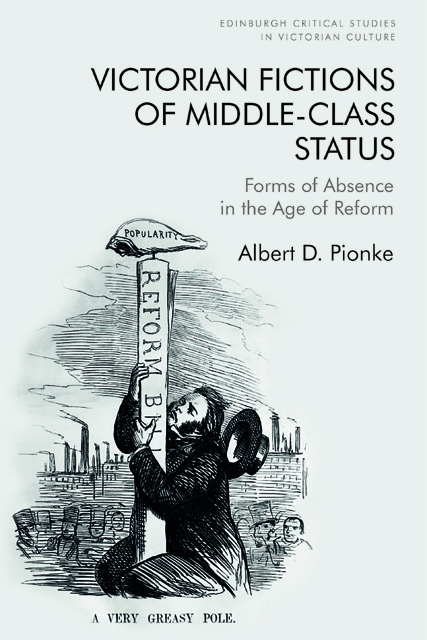Book contents
- Frontmatter
- Contents
- Acknowledgements
- Introduction: Victorian Middle-Class Status and the Negative Assertion of Value
- 1 The Orphan Narratives of a Class Lacking Antecedents
- 2 Repudiations of Wealth in Victorian Financial Fiction
- 3 The Violence at the Heart of the Social Problem Novel
- 4 Social Domination, Social Scientific Empiricism, and Novelistic Distrust of the Modern Fact
- 5 Legitimizing the Subjection of Middle-Class Women in Mid-Victorian Fiction
- Afterword
- Bibliography
- Index
5 - Legitimizing the Subjection of Middle-Class Women in Mid-Victorian Fiction
Published online by Cambridge University Press: 25 April 2023
- Frontmatter
- Contents
- Acknowledgements
- Introduction: Victorian Middle-Class Status and the Negative Assertion of Value
- 1 The Orphan Narratives of a Class Lacking Antecedents
- 2 Repudiations of Wealth in Victorian Financial Fiction
- 3 The Violence at the Heart of the Social Problem Novel
- 4 Social Domination, Social Scientific Empiricism, and Novelistic Distrust of the Modern Fact
- 5 Legitimizing the Subjection of Middle-Class Women in Mid-Victorian Fiction
- Afterword
- Bibliography
- Index
Summary
Dickens concludes his own “mere fable” of Hard Times by enumerating the futures of his principal “men and women.” Some appear to get what they deserve –Mrs Sparsit reduced to the disagreeable companion of her impecunious blood relative, Lady Scadgers; Tom penitent and reconciled by letter with Louisa but struck down by fever during his attempted return to England; and Sissy rewarded for her unstatistical steadfastness to her own father and the Gradgrind family with “happy children” of her own (219) –but not everyone. Bitzer, for instance, receives no long-term comeuppance for his lack of compassion, whether for Tom or his own mother, and instead is made “a show of” by Bounderby “as the rising young man, so devoted to his master’s great merits” (217). More egregiously, Rachel, despite her manifold virtues, remains “a woman working, ever working, but content to do it,” while bestowing her unique “compassion on a degraded, drunken wretch of her own sex, who was sometimes seen in the town secretly begging of her, and crying to her” (218).
With only one exception, the format for these visions of futurity consists of a single paragraph whose glimpse of things to come is confirmed in its final sentence. Louisa, however, looks forward to a divided fate. First, the narrative denies her Sissy’s more conventional happy ending with an abrupt reversal of its rhetorical epiphora:
Herself again a wife—a mother—lovingly watchful of her children, ever careful that they should have a childhood of the mind no less than a childhood of the body, as knowing it to be even a more beautiful thing, and a possession, any hoarded scrap of which, is a blessing and happiness to the wisest? Did Louisa see this? Such a thing was never to be. (219)After this emphatically non-parallel negation of one possibility, the novel offers Louisa a slightly more affirmative consolation in the form of service as a kind of universal maiden aunt, “all children loving her” and she seeking “to beautify” with “imaginative graces and delights” the “lives of machinery and reality” enjoined upon “her humbler fellow-creatures” (219).
The question of why some characters experience retributive narrative justice and others do not, and of why Bitzer in particular maintains a smooth upward trajectory at the bank while Rachel and Louisa remain comparatively trapped by circumstances not of their own making is a troubling one.
- Type
- Chapter
- Information
- Victorian Fictions of Middle-Class StatusForms of Absence in the Age of Reform, pp. 173 - 208Publisher: Edinburgh University PressPrint publication year: 2022

